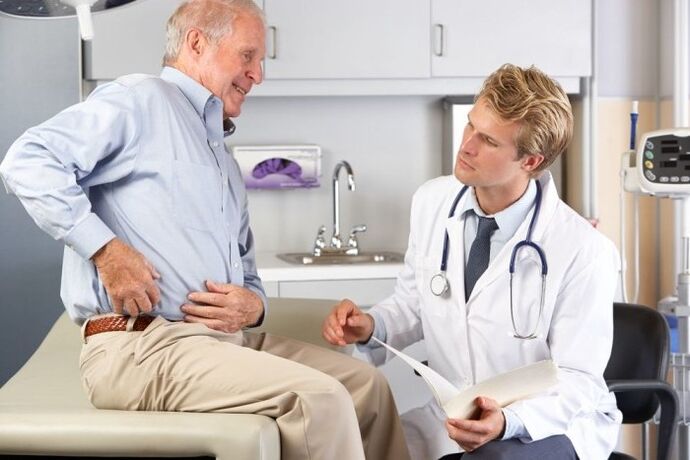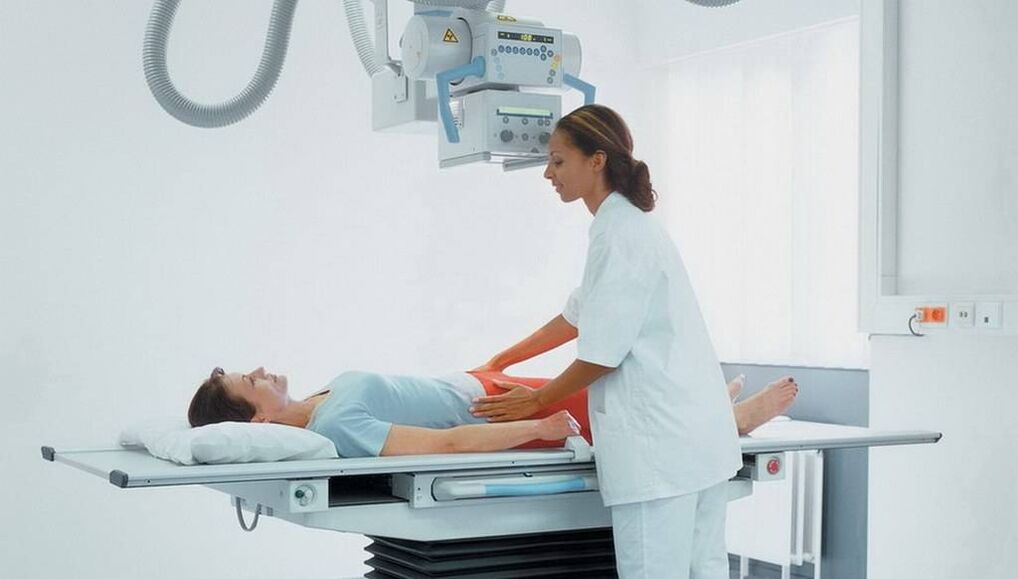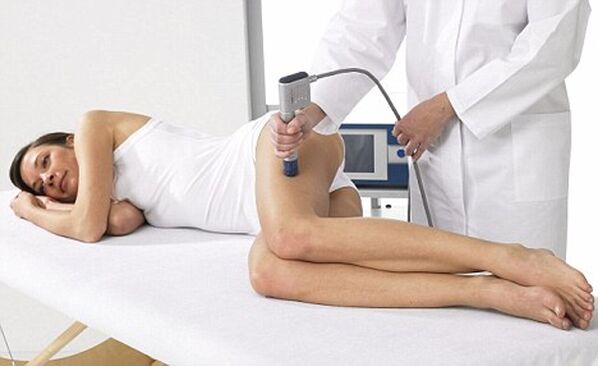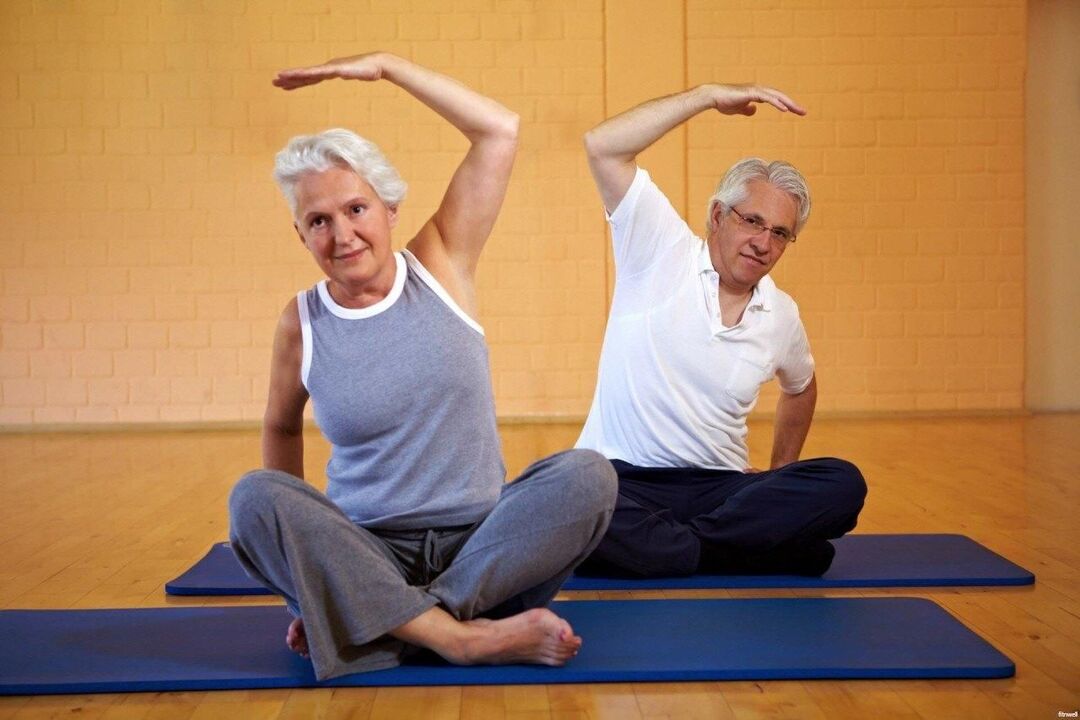Osteoarthritis (arthrosis) of the hip joint is a chronic, progressive pathology in which degenerative-dystrophic processes occur in the area of the pelvic joints. To be more precise, there is destruction of the hyaline cartilage lining the head of the femur and the acetabulum, the surfaces of the pelvic bones that are in contact with each other.
The second name of the pathology is coxarthrosis of the hip joints.
Osteoarthritis of the hip joints: characteristics of the disease
Most often, first-hand knowledge of what is coxarthrosis is for the elderly, mostly women who are at risk of developing pathology after 45 years. Such a selective appearance of pathology comes from the specifics of the structure of the female pelvic bones, as well as from their direct participation in the birth process. In men, osteoarthritis of the hip (coxarthrosis) occurs mainly after the age of 65.
An important role in the pathogenesis of coxarthrosis is played by the natural aging of the body, when the busiest joints of the bones begin to collapse.

Also, the disease can be caused by a number of infectious, traumatic, non-inflammatory diseases, their combination. Initially, osteoarthritis manifests itself as pain and decreased activity of movements in the pelvic area, but then its consequences become more serious - the affected limb is shortened.
Classification of the disease
The types of osteoarthritis of the hip depend on the characteristics of its development and the cause. There is often post-traumatic osteoarthritis of the hip - it occurs after injury. The classification also includes the following types of osteoarthritis:
- Dysplastic - due to dysplasia, which occurred in childhood, but is not cured;
- Static - associated with uneven loading of the pelvic area, which occurs with pathologies of the foot, knee, ankle;
- Post-infectious - occurs after various inflammatory diseases;
- Primary chronic - develops in the elderly due to aging.
Any type of disease can be called "deforming arthrosis of the hip joint", as the pathology leads to a violation of the shape and appearance of the pelvic articulation of the bones.
In addition, the disease is divided into 3 stages according to the severity of the changes, the symptoms of which are described below.
Causes of osteoarthritis
Signs of coxarthrosis can appear even in the absence of obvious preconditions, which is due to the natural degenerative processes in the joint. It has a narrow gap while withstanding huge and constant loads, so it wears out earlier than others. Initially, the blood circulation in the tissues is disrupted, so the nutrients are delivered to the hyaline cartilage to a lesser extent. Metabolic processes are disrupted, cartilage dries out, cracks form on it. In addition, the joint surfaces quickly wear out, destroy - the arthrosis of the hip joint progresses. Symptoms can appear even faster if the body is affected by a number of provoking factors:
- Any injuries;
- Physical work, heavy sports;
- Diseases of the spine, including distortion;
- flat steps;
- Arthritis on the background of an infectious process;
- Childhood dysplasia;
- Metabolic diseases;
- Overweight;
- Rheumatism and other autoimmune pathologies.
Against the background of the influence of such factors, the disease can develop much faster - after 30-40 years.
Symptoms of coxarthrosis
The signs of osteoarthritis of the hip largely depend on its degree. During the pathology there are three stages (stages):
- First degree. There is pain during physical overload - after a long walk, running, in connection with which there are painful, dull sensations in the pelvic area (pass after a short rest). The pain does not radiate to other parts of the leg. Deforming arthrosis of the hip joint of the 1st degree does not cause changes in gait, the muscles function fully. By the end of the stage, slight limitations in the movement of the legs may appear;
- Second specialty.The pain of osteoarthritis of the hip in this case becomes more pronounced. The pain occurs with minimal effort, discomfort is observed in the evening after work. There is pain at night, at rest. Crunching, feeling of friction in the joint. If a person walks for a long time, then swinging movements are noticed in the gait. It becomes difficult to put on shoes, take your feet aside;
- Third degree.The work of the pelvic bones is seriously impaired (in primary osteoarthritis both joints are affected, in other types usually only one). The pain in the groin is constant, excruciating, affects the knee. The thigh muscles are atrophied. The leg becomes shorter, so one uses crutches and a cane to move.
Later, ankylosis appeared, in which movement became impossible at all.
Diagnosis of the disease
What is coxarthrosis of the hip, what is its degree and how to treat the disease? All problems must be resolved after diagnosis. Despite the fact that the main method of diagnosis is radiography, the patient needs consultation with a number of close specialists and examinations. This will help identify the cause of the disease and take action. So coxarthrosis can be caused by osteochondrosis, flat feet, urological and gynecological infections and their treatment will help stop the destruction of bone articulation.

As for making an accurate diagnosis and determining the degree of osteoarthritis, all changes are perfectly visualized on a photo - X-ray or CT (MRI):
- The first degree is a slight narrowing of the gap, the appearance of marginal osteophytes;
- Second degree - narrowing of the joint space by 50% of normal, the appearance of osteophytes on the outside and inside of the cavity, deformation of the femoral head, often - the presence of inflammatory changes in the tissues near the articulation of bones;
- The third degree is a sharp deformation of the joint, the presence of large osteophytes, areas of sclerosis.
Treatment of osteoarthritis
Conservative treatment
Ointments, creams, tablets for osteoarthritis of the hip help only in the first stage of the disease. Medications can completely restore cartilage and it is important to start treatment at an early stage. NSAIDs, corticosteroids, chondroprotectors, hyaluronic acid drugs, muscle relaxants are commonly used. They also practice massage, exercise therapy and therapeutic exercises.
In the second stage it is necessary to connect physiotherapy and mechanical methods of impact on the joint. These include absorber, UHF, magnetic therapy, shock wave therapy, ultrasound, laser, inductothermy, electrophoresis. Folk remedies for osteoarthritis of the hip, like local medicines, are only of secondary importance, and the main method of therapy should be medicines.
Be sure to apply a diet for coxarthrosis of the hip joint, it is necessary to normalize metabolism and improve the nutrition of cartilage.

Endoprosthesis for osteoarthritis
The third stage of the disease can only be treated surgically. The patient is recommended joint replacement surgery or arthroplasty. The surgeon cuts off the head of the femur, inserts a metal pin into the incision on which the artificial head is attached. After the operation there is a long rehabilitation and training therapy, but then the hip joint will be fully functional and the doctor will be able to answer positively to the patient the question of whether it is possible to squat with osteoarthritis of the hip joint.

Disease prevention
To prevent osteoarthritis of the hip, sports and a healthy lifestyle should come to the fore. It is impossible to overload the joints, but it is necessary to eliminate hypodynamia. Good for walking, swimming, skiing, elliptical trainer. It is also important to lose weight and eat right.

Prevention of osteoarthritis of the hip is also based on early treatment of all kinds of bruises, injuries affecting the pelvis and spine. All congenital joint pathologies must be eliminated in childhood.
Answers to popular questions
- Who to contact with arthritis? The question of which doctor treats coxarthrosis of the hip joint has no definite answer. Of course, it is initially recommended to contact a surgeon, traumatologist or orthopedist, depending on the capabilities of the clinic. In specialized centers, an arthrologist deals with pelvic joint problems, but it is not always possible to find such a narrow specialist.
Depending on the cause of the disease, in the future, in parallel, you will have to apply and undergo treatment under the supervision of a rheumatologist, neurologist, infectious disease specialist and a number of other doctors;
- Can Arthritis Be Cured? This disease is chronic and impossible to completely eliminate, especially since the main cause is aging. But if you visit a doctor when there is osteoarthritis of the 1st degree of the hip joint, you can cure all existing changes and then prevent rapid progression. In the next stages it is possible to stop and correct all existing pathological changes and to live normally due to regular courses of therapy. Only arthroplasty can save the joint from osteoarthritis, but there are a number of disadvantages - from the need to periodically change the prosthesis to postoperative complications - pain, thrombosis, infection;
- When are topical therapies sufficient and in what cases can a visit to the doctor be avoided? All ointments can only slightly improve the microcirculation of blood in the joints, and also relieve pain, but have no therapeutic effect. In addition, this joint is located very deep, which makes it difficult to penetrate the active substances. Therefore, it is necessary to consult a doctor at any stage of the disease, regardless of the severity of the manifestations. Only at an early stage can the disease be stopped with a "little blood" without surgery.
Osteoarthritis of the hip joint is a debilitating pathology that makes a person crippled by preventing him from walking.
The only way to prevent the development of such problems is to start conservative therapy in stages 1-2 of the disease, not forgetting to conduct regular and complete courses.


















